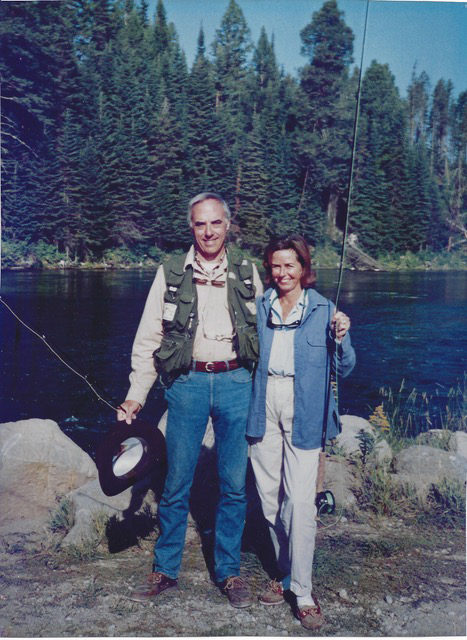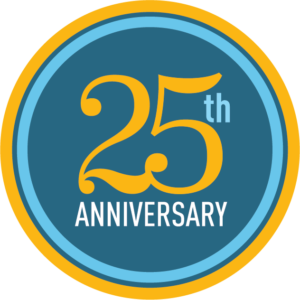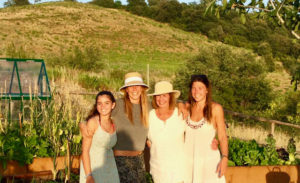
 In honor of Sustainable Conservation’s 25th anniversary, we are celebrating the voices and perspectives of our long-time supporters. This profile features Charlene Harvey, dedicated civic leader, parks champion, and Sustainable Conservation Board member. Charlene brings more than 50 years of civic leadership to our organization, and we are grateful for the passion and wisdom she shares with us.
In honor of Sustainable Conservation’s 25th anniversary, we are celebrating the voices and perspectives of our long-time supporters. This profile features Charlene Harvey, dedicated civic leader, parks champion, and Sustainable Conservation Board member. Charlene brings more than 50 years of civic leadership to our organization, and we are grateful for the passion and wisdom she shares with us.
Let’s start by talking about your environmental path. How and when did it begin?
CH: In my mid-twenties, I moved from the East Coast to Tiburon and got involved in the community right away. For years, I volunteered on boards addressing medicine, mental health, public radio, and more. I was drawn to mental health because I felt there was more need, and that I could be of real value there.
I also spent nearly 20 years as a consultant with The Management Center, assisting non-profits with improving Board/staff relations, increasing capacity, and good governance. I began focusing on environmental issues much later in my career.
My late husband Jim Harvey was a very dedicated environmentalist. He served on the board of the National Park Foundation, Golden Gate National Park Conservancy (Conservancy) and helped create the Presidio Trust. He also introduced me to fly fishing and the beautiful areas where fish live. I think his passion helped me to understand the importance of protecting our environment.
After Jim passed away, I helped the Conservancy raise funds for the Inspiration Point Overlook at the Presidio. It was a beautiful memorial to him. Shortly thereafter, I joined the Conservancy’s board. Through my involvement with the Conservancy, the Presidio Trust and other conservation organizations, the environment became the most important thing for me to work on. I believe this because climate change and its impacts are real. If we lose our ability to grow the crops we need, humanity is in real danger.

Charlene in Death Valley.
How did you first get involved with us and what was your first impression?
CH: About 10 years ago, I began working with Ashley (Boren) very informally, acting as a sounding board over a cup of coffee. About two years ago, I happily joined the board.
I have always been impressed with what a well-run and caring organization it was, and how effective Ashley is as a leader. Also, the founders of Sustainable Conservation had it absolutely right. If you don’t get the different parties talking about really difficult topics like water, enabling them to talk and really look at solutions, progress is not going to happen.
Because their approach has stayed consistent, they’ve developed a strong reputation for being honest brokers. When Sustainable Conservation says, “We work with the farmers,” they simultaneously work with the agencies that interact with farmers and help agency staff to appreciate the on-the-ground problems that farmers face. This is how solutions really come together.
What have you learned from Sustainable Conservation?
CH: Sustainable Conservation is effective in highlighting the importance of agriculture to California. Through my involvement, I’ve grown to understand that growing food in the Central Valley is really important to me as an individual. When I go hiking in the Sierras and see the Tuolumne River flowing down, it’s easy to forget where it’s going. But it is flowing right through the valley, in part, to irrigate the crops that feed us.
Californians need to better understand the importance of the Central Valley. I’m not sure we’ve fully brought the concerns of the Central Valley growers to all of the people that rely on its food. Part of our challenge is to bring those differences and concerns to the people of San Francisco, Los Angeles and the coast. Sustainable Conservation raises the voices of farmers, water managers and other players, and enables Californians to hear these conversations through forums and live-stream panels.
What is one action that your household is taking to protect California’s land, air and water?
CH: Our family has a 200-acre family ranch in Moraga. We have been working with the John Muir Land Trust to put our ranch under conservation easement. The land will be managed by the land trust to protect the local stream and sensitive species, and will feature hiking and equestrian trails for public enjoyment. I feel that it’s really important for all people to take their children into nature. Whether it’s seeing the ocean or walking on a trail, this is a very important part of life.

Charlene with granddaughters.
What role do individuals play in addressing climate change?
CH: Nowadays it’s time to be really honest with the people of California, and the American people in general, about what is happening with climate change and speaking our truth. From my years of experience, whatever the issue is, let’s get it out on the table, be open, discuss it and come to consensus. I think that young people are the way, because denial is unacceptable to them.
What is something you love and want to protect for future generations?
CH: I do have a passion for National Parks, and the Sierras in particular. The American public loves them too. I think that love of National Parks can connect the dots for people who still wonder whether climate change is real. When we begin to say climate change is affecting, for example, the Grand Canyon, people pay more attention and it doesn’t seem so threatening. People begin to listen.
What sets Sustainable Conservation apart from other organizations?
CH: Sustainable Conservation does not try to be everything to everyone. They look at a problem and truly figure out their role. In some cases, the role might be pretty narrow but also high impact. I remember talking to a farmer that had been trying to restore a little area of river that ran through his property for nine years. Most people would give up in these circumstances.
Sustainable Conservation understood they could hone in on the different agencies that permit restoration and make it easier for good work to be done. The goal is to get permits in a few months rather than a few years. Some might say, “Well, that’s doable.” But it’s only doable if you know how to first get to the right people, and then, will they even listen to your ideas? Do they have the sense that you are a true broker and that you know what you are doing? Sustainable Conservation can get in all of the necessary doors and get results.
What comes through with Sustainable Conservation is a sense of real mission and real solutions; a roll up your sleeves, “we are going to figure out how to make this happen.” We have a strong sense of integrity and we don’t run after dollars and change course because someone asked us to do that. I find that refreshingly honest.
What would you tell someone who is thinking about giving to Sustainable Conservation?
CH: In general, I feel strongly that it’s important to know where your money is going. With Sustainable Conservation, you know exactly what the project is that you’re supporting and what the goals are. For people that really want to make an impact in California, to know that their money is being spent wisely and that the work they’re supporting could have significant national and international implications – this is the organization that is going to do it.
